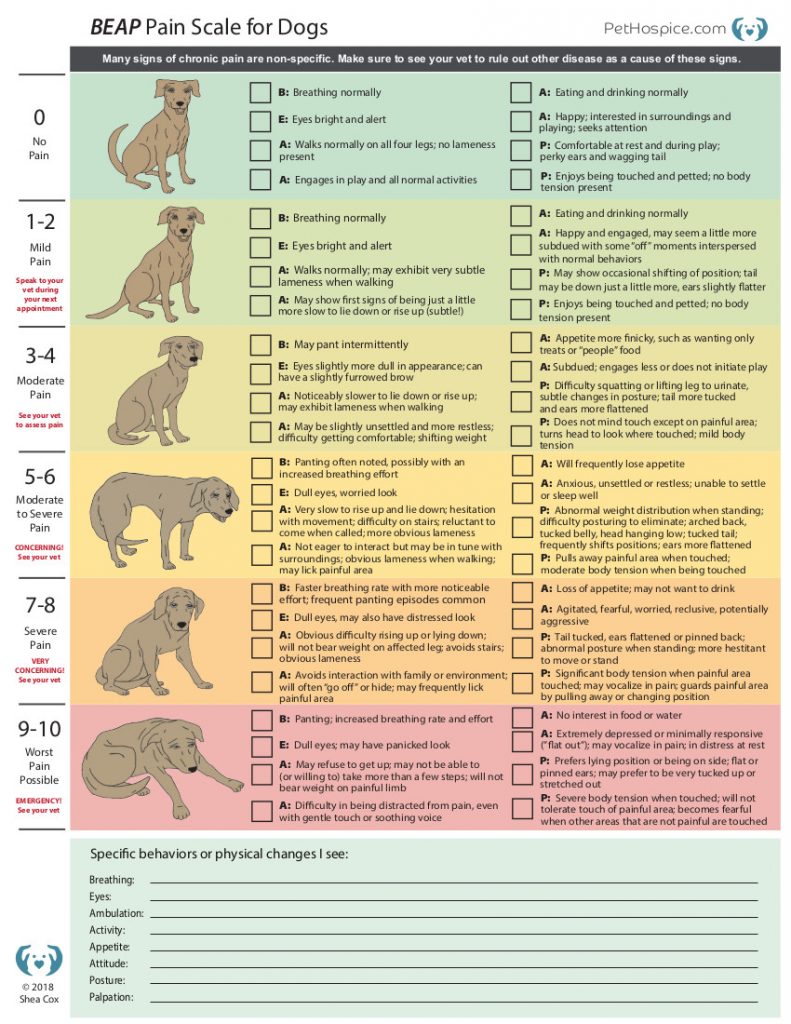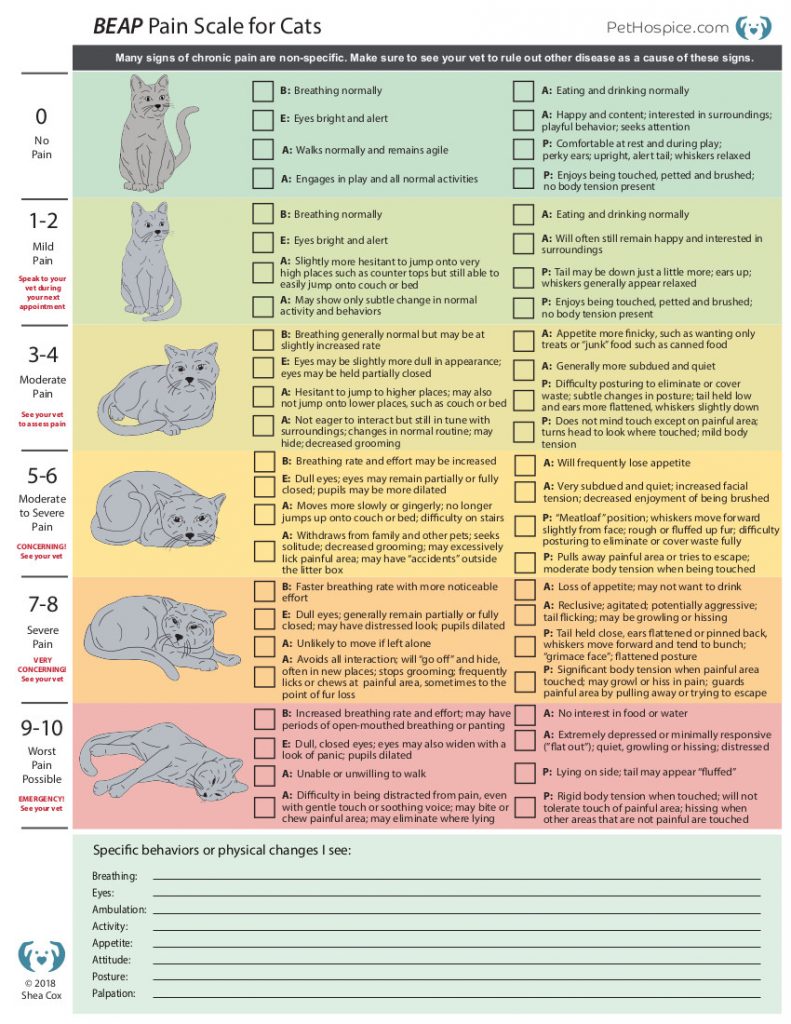Recognizing pet pain signs isn’t as mysterious as you might think. A new program and pet pain scale charts from PetHospice.com can help you get started.
Learn Pet Pain Signs for a Better Life on Three or Four Legs
“My dog / cat is limping but not in any pain.” We hear that a lot around here. Most of us weren’t taught that a limp means pain, even if our pet seems otherwise healthy and happy. As pet parents, we just weren’t taught how to recognize pet pain signs. And if we don’t understand pet pain signs, then amputation recovery and life as a Tripawd can be very difficult for both pet and parent.

Thankfully, a pet hospice service can educate us with a free pet pain signs learning program created by pet hospice veterinarian Shea Cox, DVM, CHPV, CVPP, CPLP (Certified Veterinary Pain Practitioner, Certified Hospice and Palliative Care Veterinarian, Certified Pet Loss Professional).
“Pets feel physical pain in all the same ways that we do. If there’s something that causes hurt in us people, it’s generally something that will cause hurt in our pets as well. Even though our pets can’t verbalize what they’re feeling, they do have their own language for communicating their level of discomfort to us,” says. Dr. Cox.

Free Learning Program Teaches Us What We Need to Know
Dr. Cox’s services at PetHospice.com are primarily focused on addressing quality of life issues for dogs and cats in hospice. Her team does in-person and long-distance telehealth consulting for anyone who needs help with quality of life issues for their animal. But her pet pain signs program can help any pet parent who suspects their animal is experiencing pain, at any time in the pet’s life.
Located on the Pet Parent Education section of Dr. Cox’s website, a series of videos and two downloadable pet pain signs charts teaches how to know the level of a pet’s pain. To get the most out of it, download the free pet pain signs charts for dogs and cats. Then sign up to receive the free video series about recognizing pet pain.
BEAP Pain Signal Charts Explain the Language of Pain
Pets hide pain so well. The instinct to hide it goes back thousands of years, it’s a survival mechanism to prevent them from showing weakness to the pack. We think animals cannot “tell” us they hurt because they can’t speak our language, but the truth is, they are telling just, just in their own unique way–the language of pet pain. That’s where the BEAP Pain Signal Charts help us, help them. The charts use basic cues in these eight areas to determine if our pet is experiencing discomfort.
How to Use the BEAP Pain Scales
The BEAP Pain Scales look at eight different areas of change in a pet’s behavior. “BEAP” is an acronym to help us recognize outward signs of pain, and the level of pain being experienced by our pet. The charts help us review our pet’s:
- Breathing
- Eyes
- Ambulation
- Activity
- Appetite
- Attitude
- Posture
- Palpation
Download the BEAP Pain Signs Chart for Dogs

Fill in the appropriate boxes and you have a snapshot of your pet’s symptoms on any given day. It’s a great tool to start a conversation with your vet that can help diagnose and treat your Tripawd’s pain.
Download the BEAP Pain Signs Chart for Cats

Some things Dr. Cox would like us to remember about pet pain:
Pain is dynamic. Symptoms can fluctuate from day to day, even hour to hour. It can also depend on what kind of activity your Tripawd was doing just prior to the painful event.
Pain can mimic many other diseases. Don’t automatically assume your pet is in pain just because your pet experiences some of these symptoms. It’s important to note the symptoms and discuss with your vet.
Remember, you know your pet the best. You can see the subtle changes and behaviors on a daily basis. When you learn the language of their pain enough to convey it to your veterinarian, you can help your pet feel better, sooner.
Recommended Reading
All Tripawds Articles about Pet Pain Management
